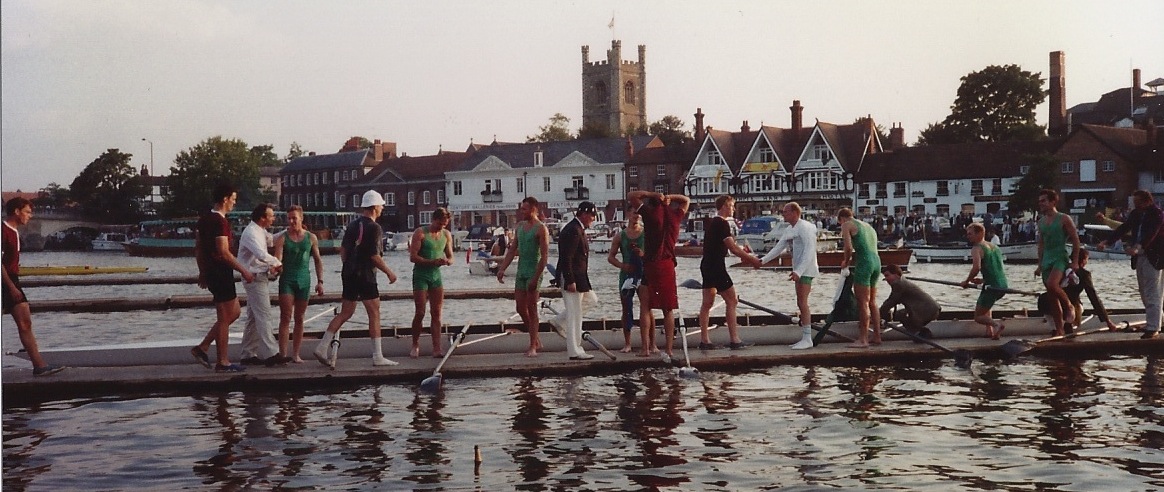In the 150 year history of the world’s oldest still-contested association football tournament, the second FA Cup final in 1873 was unusual on several fronts.
One notable distinction was two of the leading sports administrators of the period, Charles William Alcock and John Graham Chambers were parties to the conundrum over the choice of venue for the match.
Sometimes referred to as “the father of English sport”, Alcock was secretary of the Football Association and is recognised as having initiated international football by organising matches between England and Scotland. He worked as a journalist on the Sportsman newspaper and it was in an FA committee meeting held in the newspapers’ offices just off Ludgate Hill on Friday 21 July 1871 that he first floated the idea of a challenge cup competition for member clubs of the association. Aged just 29 he was still active as a player: he would be a member of the victorious Wanderers team in the inaugural final held on Saturday 16 March 1872.
Not content with being FA secretary and a working journalist, on 9 April 1872, a little over three weeks after the first cup final, he was appointed as the first paid secretary of Surrey County Cricket Club at a salary of £250 per annum. The Oval, Surrey’s ground, had hosted the early internationals organised by Alcock and the first final.
By 1873, Chambers was editor of Land and Water, “a first class weekly journal of hunting, shooting, athletics, aquatics, practical natural history, sea & river fisheries, &c.” His office on Fleet Street was just 400m from the Sportsman.
Chambers’ sporting credentials included a double rowing blue for Cambridge in the Boat Race; establishing the Varsity Athletics Match; founding the Amateur Athletic Club as a governing body for athletics and organising the AAC’s Championship Meeting – the first event that aspired to be a national championships for athletics. He was the lease-holder of the AAC’s Lillie Bridge ground located next to West Brompton railway station. For good measure, he was the principal author of the Queensberry Rules for boxing (and staged the first bouts held under the rules.) In March 1872, he had been elected a steward of Henley Royal Regatta and appointed as a race umpire.
Holder vs Challenger
1872-3 was the first and only season in which the holders of the FA Cup would receive a bye to the final in line with the original vision for the competition as a “challenge cup”.
A knock-out tournament between the other entered clubs would determine who would “challenge” the holders, Wanderers. Challenge trophies were commonplace in the mid 19th century, today less so. World titles in professional boxing and yachting’s America’s Cup (established 1851) are among the handful of survivors.
Even as the 1872-3 tournament was progressing the challenge format was being questioned.
Challenge events had been the norm at Henley Royal Regatta since its foundation in 1839. On Thursday 11 April 1872, at the committee meeting after Chambers was elected, Henley abolished its rule that exempted holders from heats. (However, the regatta maintains the tradition of including “Challenge” in the titles of most of its events, even several introduced in the 21st century.)
Similarly at a committee meeting on Tuesday 3 October 1872 the FA changed its rules so that after the 1873 final the holders would have to compete from the first round.
Road to the final
After a somewhat tortuous road to the final Oxford University emerged as the challenger. Oxford beat Crystal Palace (unrelated to the modern club of the same name) 2-3 away in October 1872; Clapham Rovers 0-3 away in November and the Royal Engineers (the previous year’s runners-up) 1-0 at home in February. Maidenhead were dispatched 4-0 in the quarter-final.
As the only club entered not from the south east of England, Queen’s Park had been given a bye to the semi-final.
Queen’s Park had provided six of the Scotland team that had played in the second official international match against England at the Oval on Saturday 8 March 1873. To manage the cost and logistical difficulties of traveling down from Glasgow – the journey to London was around 12 hours – Queen’s Park had offered to play Oxford on the Monday after the international – 10 March. Were they to win that match, they were willing to remain in London to play the final against Wanderers on the following Saturday, 15 March. Neither their semi-final opponent or Wanderers would agree to the proposal which prompted Queen’s Park to withdraw and gift Oxford a bye to the final.
Not only did Wanderers enjoy the privilege of progressing directly to the final, as holders they also had the right to choose the venue.
In the Surrey County Cricket Club committee minutes for Monday 26 August 1872 it is recorded, presumably in Alcock own hand:
That during the ensuing football season the Wanderers have the use of the lower part of the ground for football matches and it is understood that the proceeds of the two international matches be appropriated by the Surrey Club and half the proceeds of any other matches in which they see fit to close the gates.
Elsewhere the minutes also reveal that for cup finals, Surrey would pay for winners’ medals – as long as they didn’t cost more than £2 each – but would keep two thirds of the gate receipts. So with an existing and established formal arrangement with the Oval, and having enjoyed cup success at the ground the previous season, what persuaded Wanderers to choose to play the 1873 final at Chambers’ Lillie Bridge ground? Did Chambers offer them a better commercial deal? If so for whose benefit? The FA? Wanderers?
Rob Cavallini’s 2005 history of Wanderers suggests that Lillie Bridge may have been chosen for tactical reasons. Surrey had been founded in 1845 and based itself at the Oval from its earliest days. By the 1870s, many in cricket considered the Oval to be a better quality pitch than even Lords.
Oxford’s most feared player was Robert Vidal, “the prince of dibblers.” As a school boy, Vidal had been a member of the 1872 cup winning Wanderers team. He went up to Oxford in October. Perhaps Wanderers thought that the presumably less refined Lillie Bridge pitch would give them a better chance of containing Vidal’s threat.
In the event, Wanderers were able to contain Vidal and retained the cup, winning 2-0 before 3,000 spectators.
(Vidal would be awarded a rugby blue for Oxford in December 1873. He would also secure his second FA winners medal with Oxford and be awarded a blue for the inaugural varsity soccer match in the space of two weeks in March 1874. All three of these matches were played at the Oval. Vidal holds a special place in FA Cup history as the only person to play in all of the first three finals.)
Early kick-off
A morning kick-off was another unique attribute of the 1873 final.
Scheduling the final had proved difficult due to the number of representative and international matches and the propensity of several Wanderers players to turn out regularly for other clubs such as Old Etonians or Old Harrovians. As a team, Wanderers only managed to played 23 matches in 1872-3 compared with 32 the previous season. Boat Race day, Saturday 29 March, turned out to be one of the few dates that would work. As the tide dictated that the Boat Race needed to start at 2.30 pm, kick-off for the cup final was scheduled for 11:00 – although the match didn’t actually start until 11:30 – so that spectators could watch both events.
Being adjacent to West Brompton station, Lillie Bridge was just two stops from Putney Bridge. The Oval would scarcely have been less accessible as Putney (High Street) is only three stops from Vauxhall Station which is close to the Surrey cricket ground.
For Chambers this would have been a busy day: he was coach to the Cambridge crew for the Boat Race. The Light Blues victory by three lengths in a new record time of 19 min 35 sec would have been gratifying. Injury kept Alcock out of the Wanderers’ team.
That 20 of the first 21 FA Cup finals were played at the Oval makes the decision to play at the 1873 final at Lillie Bridge difficult to fully comprehend.
What the papers said
Perhaps an indication of the immaturity of the Cup as a sporting event, media reporting was skewed towards the older Boat Race.
Despite Alcock’s involvement even The Sportsman’s coverage of the F.A. Cup final was limited. The paper devoted 860 words (together with the team lists) to the final compared with 2350 words (plus crew lists and a table of all previous results) for the Boat Race.
Land and Water dedicated 2350 words to the Boat Race. Chambers’ paper also included 1730 words on the Varsity Athletics that was held at Lillie Bridge on Monday 31 March and even 1700 words on the Varsity billiards match. Notwithstanding Chambers’ role in hosting the match and the university interest – an important part of his readership – the final didn’t get a mention at all!



